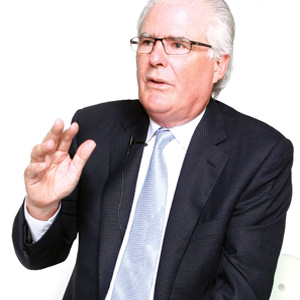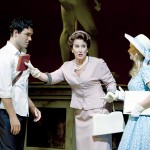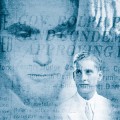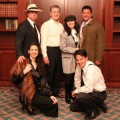It seems bizarre that one of the most brutal acts of civic violence in American history took place in pastoral San Jose, a small town that had escaped the ravages of the Depression and was enjoying a period of peaceful affluence. But John D. Murphy, author of a book and movie about the 1933 lynching in St. James Park, says that bucolic serenity is part of what triggered the notorious event.
“San Jose was a profoundly middle-class town,” Murphy says. “There were 35,000 homeowners in a city of 40,000 residents. It was a prosperous scene. Then, the bubble popped.”
It seems that everyone in San Jose knew Brooke Hart, whose family owned Hart’s Department Store, where everyone in town shopped. When the handsome young man was kidnapped, it was the most disturbing thing that had ever happened, and became a huge news story. When Hart’s body was discovered in San Francisco Bay a few weeks later, and two men were arrested soon after, the town exploded.
Murphy, a former professor at San Jose State University who went on to help found the University of Phoenix, says the extremely violent nature of the crimes frightened and enraged the citizenry.
“The descriptions of the murder of this guy, the utter cold-blooded callousness—we’re used to the graphic depiction of violence, but back then, imaginations just went crazy.”
article continues below video…
The popular rage was fueled by public officials who, in Murphy’s estimation, co-opted the murder for their own uses.
“When you have everyone convinced of their guilt—the sheriff, the head of the police department, the county supervisors, the mayor, all the business and civic leaders, the governor of the state—it’s like, ‘Here’s a free pass, go do whatever you want to do.’ And that’s what happened.”
Murphy says he first heard the story of the lynching when he was a college student, from a friend with whom he was painting houses in Santa Clara. The friend’s grandfather had been part of the crowd of 15,000 or more who witnessed and/or participated in the mob killing, but would not speak of the incident.
Murphy then read Swift Justice, the book about the lynching written by the longtime Mercury News editor and columnist Harry Farrell, a journalistic inquiry that the Hart family—major Merc advertisers—had forced the newspaper to suppress for 30 years. Murphy was surprised to read that Farrell had not analyzed the event to determine whether the lynching victims had in fact murdered Hart, but simply took officials at their word.So Murphy began a decades-long project that began with his reading reams of FBI files, and ended with the production of a Hollywood movie, Valley of the Heart’s Delight, a fictionalized version of the lynching released in 2007. The film was followed by the publication of the book Jury Rigging in the Cort of Public Oinion, excerpted here.
{pagebreak}
Murphy says he was inspired by a belief that John Holmes and Thomas Thurmond, the men hung for the murder of Brooke Hart, probably didn’t commit the crime. This conclusion is based on evidence Murphy gleaned from the FBI files.
“John Holmes confessed that he was at a parts store at five in the evening, an hour before the kidnapping; he was in fact in south San Jose at a friend’s home, she testified to that, between five and six. He couldn’t have done it.“[Thurmond], who was brain damaged, claimed he had to borrow his father’s car to do all this stuff—to take [Hart’s] wallet to San Francisco, to drive to Sacramento. I don’t think so. And no one ever asked the parents if he had the car. The FBI didn’t ask them and the sheriff didn’t ask them.”As soon as the men were arrested, Murphy says, a media frenzy ensued, fueling the inevitable end.
“The word went out instantly. The San Francisco papers sent every reporter and every photographer they had to San Jose. The lynching was going to happen. It was on the radio. It just spread like wildfire. There were something like 5,000 cars blocking the streets around St. James Park.”
Thirty years after learning of the 1933 melee, Murphy still appears horrified when describing it. The crowd battered in the doors of the jail while police looked on and did nothing. They dragged Holmes and Thurmond out into the street, beating Holmes unconscious. The crowd then strung the men up, stripped them, and tried to light their bodies on fire.“It was like one of these primordial things got loosed,” Murphy says. “It’s just emblematic of that psychology of those in power who want to appear strong and decisive, and they light the fire and it gets going beyond anything that they’d imagined. And we’re stuck with it.”
“I’ve been an educator my whole life and I think this is something that has applicability as a prism to look through at a lot of things that we continue to do in our society. We love the idea of ‘curbside justice.’ Well, this was curbside justice.”

 Venerable Beads
Venerable Beads  Silicon Valley Stage: ‘The Light in the Piazza’
Silicon Valley Stage: ‘The Light in the Piazza’ 


